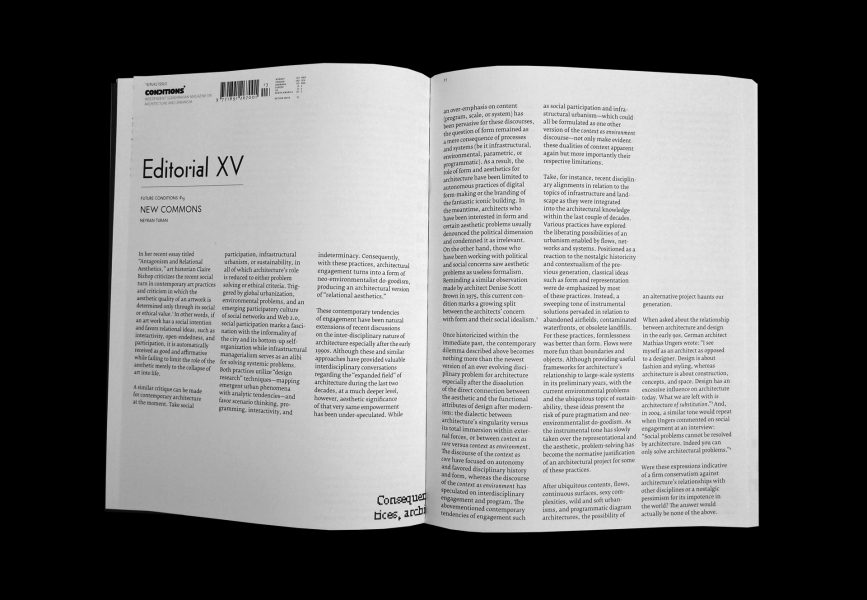In her recent essay titled “Antagonism and Relational Aesthetics," art historian Claire Bishop criticizes the recent social turn in contemporary art practices where the aesthetic quality of an art work is determined only through its social or ethical value.1 In other words, if an art work has a social intention and favors relational ideas, such as interactivity, open-endedness, and participation, it is automatically received as good and affirmative. A similar critique can be made for contemporary architecture at the moment. Take social participation or sustainability, in all of which architecture's role is reduced to either problem solving or ethical criteria, producing an architectural version of “relational aesthetics."
After ubiquitous contents, flows, continuous surfaces, sexy complexities, wild and soft urbanisms, and programmatic diagram architectures, the possibility of an alternative project haunts our generation. Rather than an overemphasis on architectural core via pure form or an engagement with the world via pure content, can there be a speculative architectural project located as a third way between the two? Instead of seeing the architect either as an artist (autonomous formalism), an activist (social participation), or a technocrat (infrastructural managerialism/environmental engineering), can we have a renewed conversation for architecture's role in the city?
A possible way out from this dilemma can only be possible with moving away from these limited dualities and searching for experimental ways to redefine the capacity of architectural aesthetics in engaging with the world. This third way, which would be tentatively called, New Commons would provide a radical ground for forging new and more productive relationships between aesthetics and engagement. Here, autonomy would not register so much to a referral of an older definition (autonomy as retreat) but would instigate a yet-to-be-elaborated definition of disciplinarity for contemporary architecture. And, engagement would be neither perceived as a compromise nor as a celebrative immersion but would be understood as a specific and valuable content to relate to the world.
[1] Claire Bishop, “Antagonism and Relational Aesthetics," October 110 (Autumn 2004), 51-79. Bishop's use of the term “relational aesthetics" is from Nicolas Bourriaud, Relational Aesthetics (Dijon: Les presses du réel, 2002).

